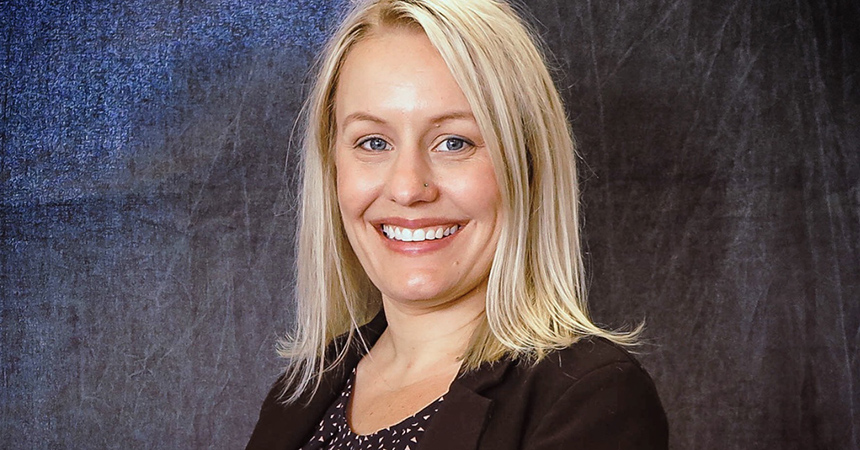HSC professor working to safeguard against oral cancers
What’s known is that 66% of oropharyngeal cancers are HPV-related. In mid June, the FDA approved the HPV vaccine, Gardasil 9, for the prevention of certain HPV-related head and neck cancers.
What’s still to be explored is why HPV vaccine rates remain low – despite strong public health recommendations in favor of this important protective measure – and how oral health providers can take the lead in encouraging their patients to immunize.
HSC School of Public Health Assistant Professor Stacey Griner, PhD, is seeking solutions to these issues by connecting with other health investigators and scientific mentors through a program of the National Institutes of Health (NIH) Training Institute for Dissemination and Implementation Research in Cancer (TIDIRC), supported by the National Cancer Institute.
She was selected earlier this year for this highly competitive, health investigator-training program and will move on to the next stage of her research when the 2020 TIDIRC session completes in August.
“Dental providers can be instrumental in recommending the HPV vaccine to their patients,” Dr. Griner said.
“Having been there myself earlier in my career, working as a Registered Dental Hygienist for many years, I see ways that dentists and their staff can be a good resource for patients who don’t know about, may have questions or may have hesitations about the HPV vaccine,” she said.
Dr. Griner worked as a Dental Hygienist for 10 years and always had an interest in teaching and doing more related to research and prevention.
At one point along the way, a dentist she worked with suggested that public health might be something she would want to look into.
She decided to pursue a Master of Public Health degree, then her PhD in Public Health, joining the HSC faculty in 2019.
“Dental hygienists focus on prevention, so it was a natural for me to move into public health,” Dr. Griner said. “Since many oral cancers are linked with HPV, it’s a unique opportunity to look at the information oral health providers can share with their patients to prevent these types of cancers, including recommending the HPV vaccine.”
While the American Dental Association, American Academy of Pediatric Dentistry and other related societies have recently released policies in support of the HPV vaccine for oral cancer prevention, questions remain as to how informed oral health providers are on this new guidance and whether they have implemented recommendations with their patients.
There is also work to be done, Dr. Griner said, on ways of best conveying the policies to dentists and dental hygienists.
“Right now, it’s not clear how many oral health providers are aware of the HPV vaccine policies from their professional organizations, or how they learned about them if they are aware,” she said. “This work will explore the ways these providers want to receive the information and how they want it framed, so they can incorporate the recommendations into their daily practice.”
The long-term goal for Dr. Griner, with SPH research colleague Dr. Erika Thompson, will be to assess providers’ current awareness, acceptability, adoption and practices related to HPV policies, to ultimately reduce the rates of HPV-related oral cancers among their patients.







Social media